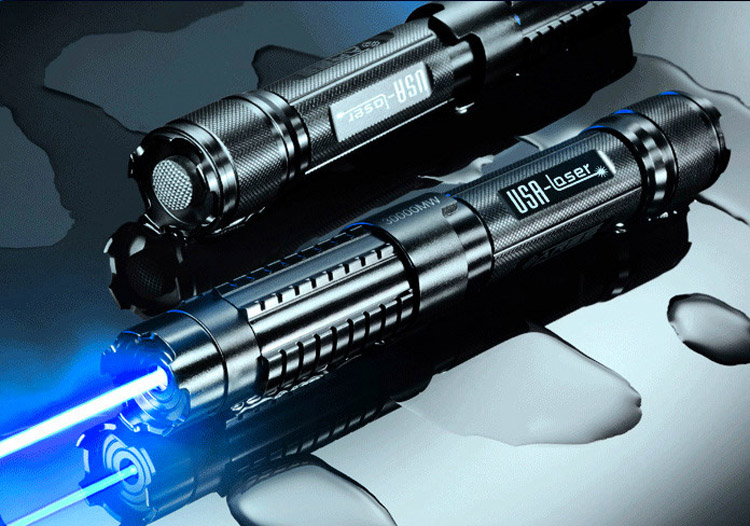For a long time, how to maintain communication with the outside world has been a worldwide problem. The application of the blue-green laser pointer opens up a brand-new technical approach for the realization of submarine underwater communication. The reason why sea water appears blue-green is because sea water absorbs other colors of light in the spectrum. In the early 1970s, American researchers first discovered the blue-green “sea window”, and then cleverly used blue-green lasers of a certain wavelength to be relayed by satellites or aircraft, making the submarine underwater communication a step forward.
The blue-green laser underwater communication uses the principle that blue-green light with a wavelength of 450-530 nanometers has less attenuation under water. The underwater blue-green laser communication has the advantages of strong seawater penetration ability, fast data transmission rate, directionality, light equipment and good resistance to interception and nuclear radiation, which is equivalent to the data communication of submarines in the water. “Hearing aids”, thus quickly developed rapidly and extensively studied.
Since the US Navy proposed the feasibility study of satellite-submarine communication in 1977, laser-to-submarine communication has quickly become a strategic research program of the United States. Since 1980, the United States has carried out many large-scale blue-green laser-to-submarine communications experiments at the frequency of almost every two years. By the mid-1990s, all key tests for blue-green laser underwater communications were basically completed. At this time, the Soviet Union, which is at the other end of the sharp game of the bipolar pattern, was not far behind. Since the end of 1983, the Black Sea Fleet has conducted a test of the blue-green laser communication of the shore-to-dive using space orbit mirrors. Since then, the United Kingdom, Germany, Canada, France, Australia and other countries have also followed up the research.
After more than 10 years of uninterrupted blue-green laser communication tests, the US military has now formed a clearer development direction of satellite-submarine laser communication. In particular, the successful development of a diode-pumped solid green laser pointer with small size, light weight, high power, and long life has made it possible to mount a blue-green laser on a satellite. The US Department of Defense’s Advanced Research Projects Agency is using the geosynchronous satellite as a platform to develop a duplex satellite-submarine blue-green laser communication system. In response to the current status of submarine communications, the US military has also added an onboard blue-green laser communication system to the E-6 “Mercury” transformed from Boeing aircraft, and has achieved certain data communication effects.
